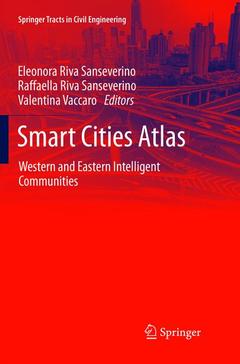Description
Smart Cities Atlas, Softcover reprint of the original 1st ed. 2017
Western and Eastern Intelligent Communities
Springer Tracts in Civil Engineering Series
Coordinators: Riva Sanseverino Eleonora, Riva Sanseverino Raffaella, Vaccaro Valentina
Language: English
Subjects for Smart Cities Atlas:
Support: Print on demand
Description
/li>Contents
/li>Comment
/li>
The book discusses the concept of the smart city, and is based on a multi-service and multi-sectoral approach to urban planning, including various urban functions and the human capital of cities. The work is divided into three parts. The first is an introductory section which covers definitions, policies and tools used at European level for the development and classification of a smart city. The second presents a selection of examples of Western and Eastern communities, which experienced technologies and strategies that have made them smart. The third describes in detail the main three possible approaches (economical, technological and social) to the smart city concept which are the focus ambits of the holistic concept of smart city.
The work provides a good overview of the concept of smart city, and also offers a critical analysis of the various approaches to smart cities, in order to provide tools to develop solutions that address the smart development of cities with an approach as multi-sectoral as possible.
Its accessible language and several examples make the book easy to read and appealing to public administrators, students, planners and researchers.



